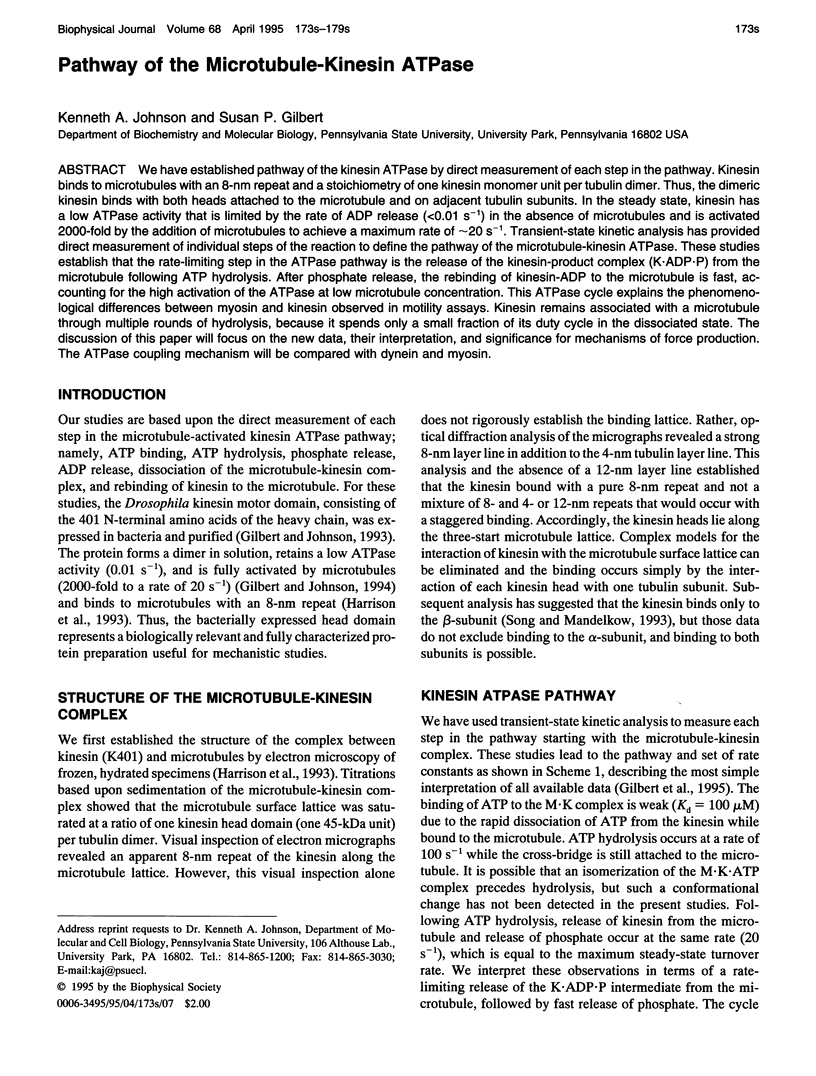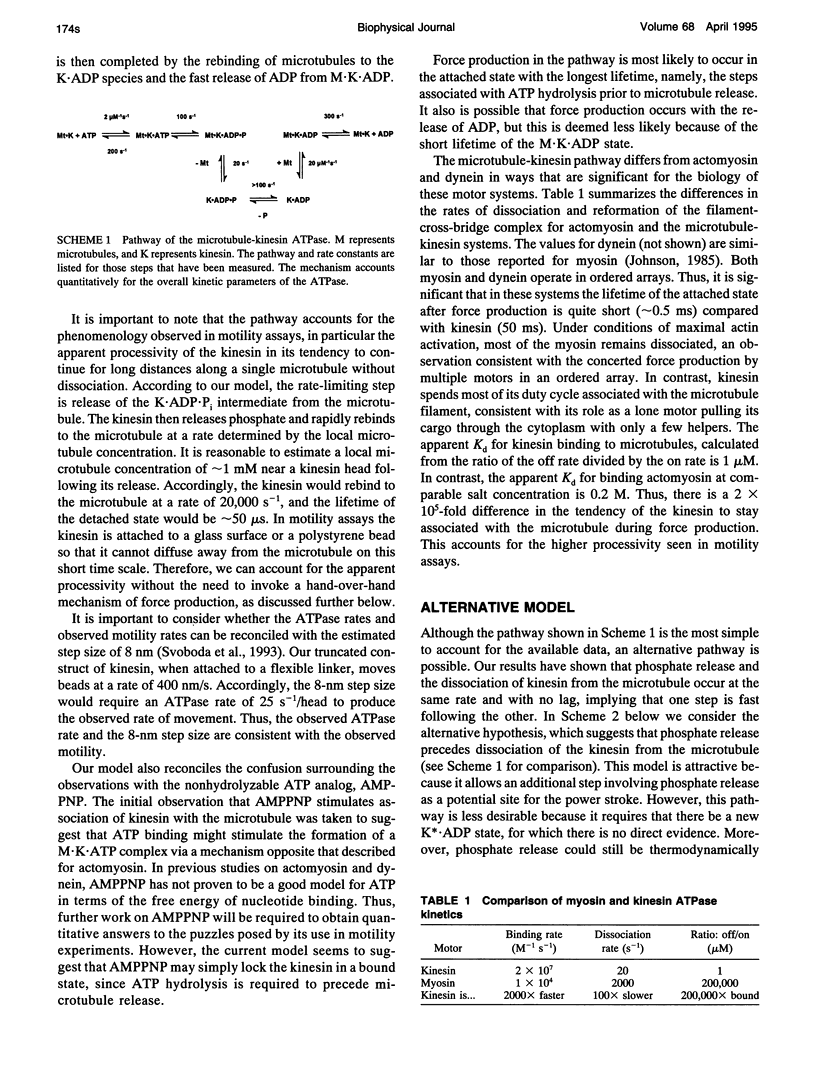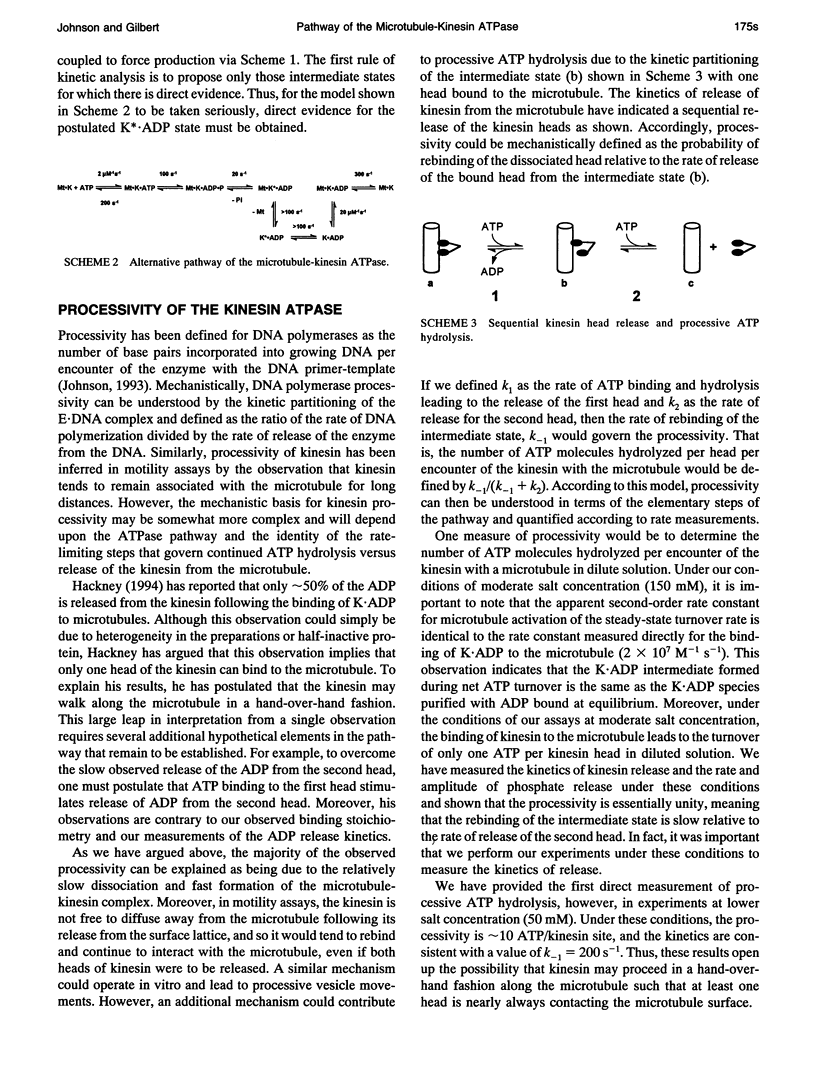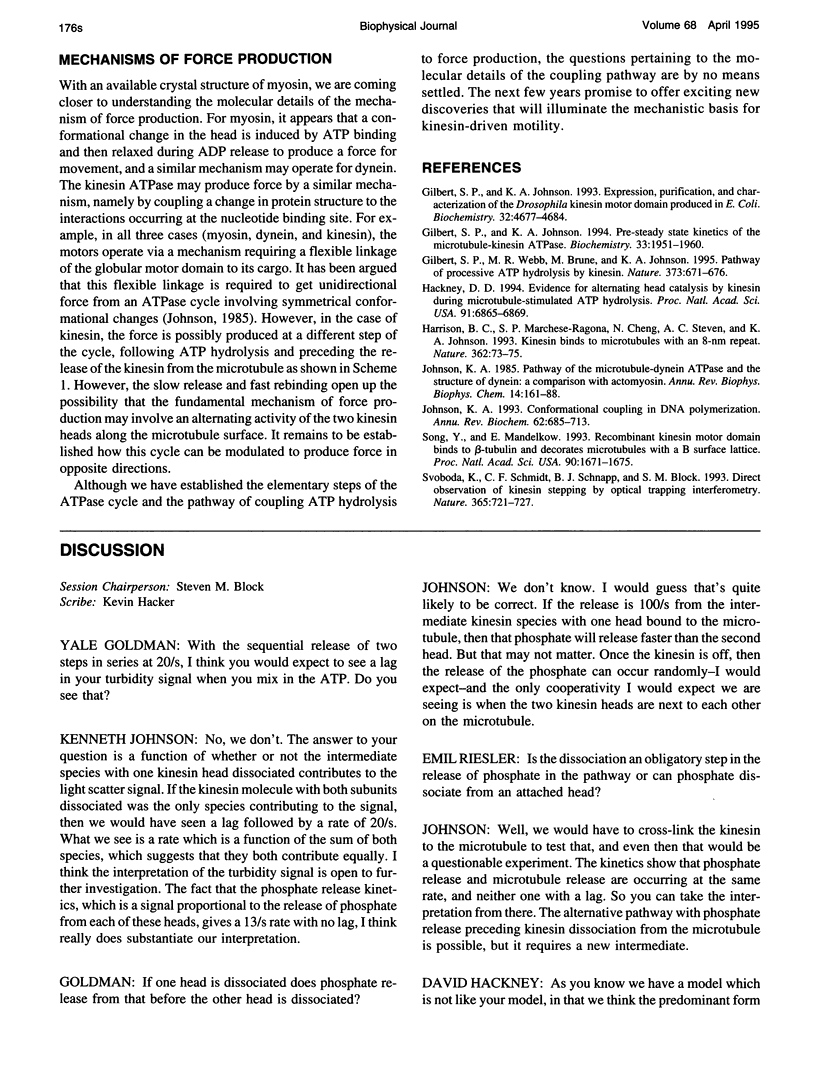Abstract
We have established pathway of the kinesin ATPase by direct measurement of each step in the pathway. Kinesin binds to microtubules with an 8-nm repeat and a stoichiometry of one kinesin monomer unit per tubulin dimer. Thus, the dimeric kinesin binds with both heads attached to the microtubule and on adjacent tubulin subunits. In the steady state, kinesin has a low ATPase activity that is limited by the rate of ADP release (< 0.01 s-1) in the absence of microtubules and is activated 2000-fold by the addition of microtubules to achieve a maximum rate of approximately 20 s-1. Transient-state kinetic analysis has provided direct measurement of individual steps of the reaction to define the pathway of the microtubule-kinesin ATPase. These studies establish that the rate-limiting step in the ATPase pathway is the release of the kinesin-product complex (K.ADP.P) from the microtubule following ATP hydrolysis. After phosphate release, the rebinding of kinesin-ADP to the microtubule is fast, accounting for the high activation of the ATPase at low microtubule concentration. This ATPase cycle explains the phenomenological differences between myosin and kinesin observed in motility assays. Kinesin remains associated with a microtubule through multiple rounds of hydrolysis, because it spends only a small fraction of its duty cycle in the dissociated state. The discussion of this paper will focus on the new data, their interpretation, and significance for mechanisms of force production. The ATPase coupling mechanism will be compared with dynein and myosin.
Full text
PDF



Selected References
These references are in PubMed. This may not be the complete list of references from this article.
- Gilbert S. P., Johnson K. A. Expression, purification, and characterization of the Drosophila kinesin motor domain produced in Escherichia coli. Biochemistry. 1993 May 4;32(17):4677–4684. doi: 10.1021/bi00068a028. [DOI] [PubMed] [Google Scholar]
- Gilbert S. P., Johnson K. A. Pre-steady-state kinetics of the microtubule-kinesin ATPase. Biochemistry. 1994 Feb 22;33(7):1951–1960. doi: 10.1021/bi00173a044. [DOI] [PubMed] [Google Scholar]
- Gilbert S. P., Webb M. R., Brune M., Johnson K. A. Pathway of processive ATP hydrolysis by kinesin. Nature. 1995 Feb 23;373(6516):671–676. doi: 10.1038/373671a0. [DOI] [PMC free article] [PubMed] [Google Scholar]
- Hackney D. D. Evidence for alternating head catalysis by kinesin during microtubule-stimulated ATP hydrolysis. Proc Natl Acad Sci U S A. 1994 Jul 19;91(15):6865–6869. doi: 10.1073/pnas.91.15.6865. [DOI] [PMC free article] [PubMed] [Google Scholar]
- Harrison B. C., Marchese-Ragona S. P., Gilbert S. P., Cheng N., Steven A. C., Johnson K. A. Decoration of the microtubule surface by one kinesin head per tubulin heterodimer. Nature. 1993 Mar 4;362(6415):73–75. doi: 10.1038/362073a0. [DOI] [PubMed] [Google Scholar]
- Johnson K. A. Conformational coupling in DNA polymerase fidelity. Annu Rev Biochem. 1993;62:685–713. doi: 10.1146/annurev.bi.62.070193.003345. [DOI] [PubMed] [Google Scholar]
- Johnson K. A. Pathway of the microtubule-dynein ATPase and the structure of dynein: a comparison with actomyosin. Annu Rev Biophys Biophys Chem. 1985;14:161–188. doi: 10.1146/annurev.bb.14.060185.001113. [DOI] [PubMed] [Google Scholar]
- Song Y. H., Mandelkow E. Recombinant kinesin motor domain binds to beta-tubulin and decorates microtubules with a B surface lattice. Proc Natl Acad Sci U S A. 1993 Mar 1;90(5):1671–1675. doi: 10.1073/pnas.90.5.1671. [DOI] [PMC free article] [PubMed] [Google Scholar]
- Svoboda K., Schmidt C. F., Schnapp B. J., Block S. M. Direct observation of kinesin stepping by optical trapping interferometry. Nature. 1993 Oct 21;365(6448):721–727. doi: 10.1038/365721a0. [DOI] [PubMed] [Google Scholar]


